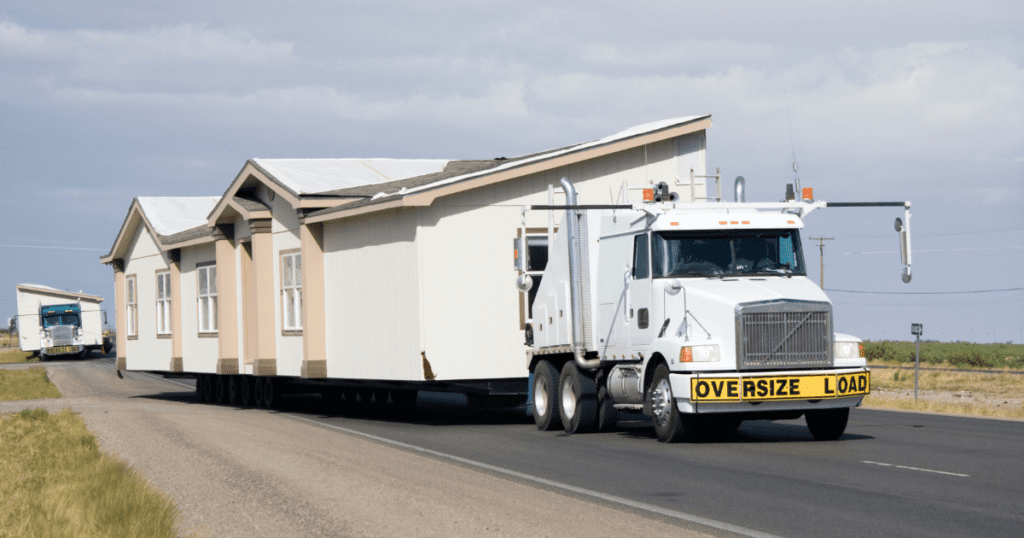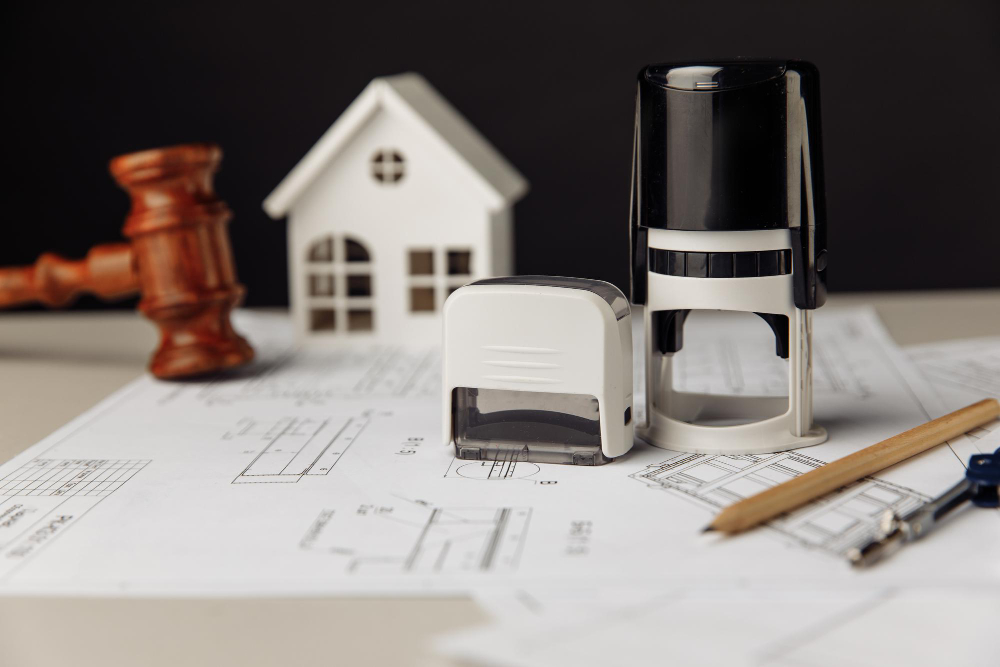In a world where innovation continuously reshapes industries, the construction sector stands on the brink of a remarkable transformation. Enter the era of portable houses, a game-changing concept that promises to revolutionize the way we perceive and build homes. Gone are the days of rigid, immovable structures dominating the architectural landscape. The rise of portable houses signals a shift towards a more efficient, sustainable, and flexible future.

Traditionally, constructing a home has been a time-consuming and resource-intensive endeavor. The emergence of portable houses challenges this norm, offering a refreshing perspective on what it means to have a place to call your own. These portable abodes are not just temporary shelters; they represent a dynamic fusion of modern innovation and practicality. By integrating cutting-edge technologies, sustainable practices, and a deep understanding of spatial design, portable houses are redefining the very essence of homeownership.
But what exactly are portable houses, and how do they fit into our changing world? This article delves into the concept of portable houses, tracing their roots from historical innovations to contemporary marvels. We’ll explore the myriad advantages they bring to the table, from flexibility and sustainability to cost-efficiency and disaster relief capabilities. Moreover, we’ll uncover the groundbreaking technologies driving the evolution of portable housing, showcasing how prefabrication, smart home integration, and even 3D printing are shaping the future of living spaces.
Join us on a journey to discover how portable houses are overcoming challenges, dispelling misconceptions, and creating new possibilities for individuals and communities alike. Through real-world examples, we’ll witness the success stories of tiny homes, pop-up communities, and remote housing solutions that showcase the versatility and potential of portable living. As we peer into the horizon, we’ll catch a glimpse of what lies ahead, envisioning a future where portable houses seamlessly integrate with renewable energy sources, adapt to individual preferences, and contribute to reshaping urban landscapes.
Embrace the evolution, as we delve into the captivating world of portable houses and unravel the threads of transformation they weave within the construction industry.
The Concept of Portable Houses
At the heart of the architectural revolution lies the concept of portable houses, a groundbreaking departure from traditional construction norms. Portable houses, often referred to as modular or prefab houses, represent a paradigm shift in how we envision and realize living spaces. These innovative dwellings are meticulously designed and fabricated off-site, then transported to their intended location for assembly.
Intrinsically adaptable, portable houses prioritize flexibility and mobility. They challenge the notion of a fixed living environment, allowing homeowners to relocate or reconfigure their spaces with unprecedented ease. This flexibility extends beyond physical mobility – portable houses embrace diverse design aesthetics and cater to a wide range of needs, accommodating various lifestyles and preferences.
The construction of portable houses leverages advanced techniques like prefabrication and modular assembly. This not only expedites the building process but also reduces waste and energy consumption. Moreover, portable houses boast exceptional sustainability credentials, often incorporating eco-friendly materials and energy-efficient systems to minimize their environmental footprint.
The concept’s true allure lies in its fusion of innovation and practicality. Portable houses combine contemporary design elements with the advantages of off-site manufacturing, resulting in well-crafted homes that can be efficiently produced, effortlessly transported, and conveniently personalized. As we journey deeper into the realm of portable houses, we unveil a transformative narrative that promises not only to reshape our physical surroundings but also to challenge conventional notions of permanence in architecture.
Advantages of Portable Houses
The ascent of portable houses brings forth a plethora of advantages that resonate deeply with our evolving needs and aspirations. At the forefront is unparalleled flexibility. These adaptable dwellings empower homeowners to redefine their living spaces, enabling seamless relocation and reconfiguration. Whether it’s a change of scenery or a shift in lifestyle, portable houses embody the essence of mobility.
Sustainability emerges as a defining hallmark. The construction process employs innovative techniques like prefabrication and modular assembly, reducing waste and energy consumption. Portable houses embrace eco-conscious materials and energy-efficient systems, aligning with our collective drive for a greener future.
Cost-efficiency takes center stage. The streamlined manufacturing process ensures optimal resource utilization, resulting in budget-friendly options for homeowners. Furthermore, the reduced construction time translates to lower labor costs and minimized disruption to communities.
In times of crisis, portable houses shine as beacons of resilience. These versatile structures offer swift solutions for disaster relief and emergency housing, providing safe havens during challenging times.
The marriage of technology and design is another triumph. Smart home integration seamlessly blends modern conveniences with portable living, creating spaces that are both functional and innovative.
Portable houses foster a shift in mindset, challenging preconceived notions of permanence in housing. Embracing these homes means embracing adaptability, sustainability, and cost-effectiveness – a holistic approach that paves the way for a new era in dwelling solutions.
Innovative Technologies Shaping Portable Housing
In the dynamic landscape of portable housing, a synergy of innovative technologies is catalyzing a transformative wave. Prefabrication and modular construction stand as cornerstones, accelerating the building process and enhancing precision. These techniques allow components to be crafted off-site with meticulous detail, resulting in faster assembly and minimized waste.
Cutting-edge materials are integral to the evolution. Advanced composites, engineered wood, and eco-friendly options not only ensure structural integrity but also contribute to energy efficiency and sustainability. These materials create homes that are durable, adaptable, and environmentally conscious.
Smart home integration is seamlessly woven into the fabric of portable housing. From intuitive climate control to intelligent lighting, automation enhances convenience while reducing energy consumption. Internet of Things (IoT) devices and sensors further elevate the living experience, enabling real-time monitoring and efficient resource management.
The advent of 3D printing adds an avant-garde dimension. This technology holds the potential to revolutionize portable housing construction, enabling intricate designs, customization, and rapid production. It promises to democratize architecture, bringing innovative and affordable housing solutions to diverse communities.
As portable housing takes center stage, these innovative technologies converge to create dwellings that transcend conventional boundaries. They empower homeowners with adaptable, sustainable, and intelligent living spaces, reaffirming the boundless possibilities that technology and imagination can achieve.
Overcoming Challenges and Changing Perspectives
The journey to embrace portable housing is not without its challenges, but a shift in perspective is illuminating the path forward. Zoning and regulatory considerations, often seen as obstacles, are gradually evolving as policymakers recognize the benefits of flexible, sustainable living. Collaborative efforts between industry experts and local authorities are shaping regulations that accommodate the unique nature of portable houses while ensuring safety and compliance.
Addressing misconceptions is pivotal. Skepticism about the quality and design of portable houses is being dispelled through innovative showcases and success stories. Architects and designers are pushing boundaries, proving that these homes can be both aesthetically pleasing and structurally sound.
Furthermore, bridging the gap between traditional and portable housing is fostering a holistic perspective. Integrating elements from both worlds – the comfort of conventional homes with the versatility of portable structures – is reshaping how we perceive modern living.
Ultimately, the challenges are becoming opportunities for innovation. As the narrative surrounding portable housing shifts, it fosters an environment where creative problem-solving and open dialogue lead to practical solutions. By embracing change and envisioning a future where flexible, sustainable, and well-designed living spaces are the norm, we lay the groundwork for a harmonious coexistence of tradition and progress in the realm of housing.
Real-world Examples of Successful Portable Housing Projects
Real-world examples vividly showcase the triumphs of portable housing. Tiny homes, compact yet functional, have gained momentum as a solution for minimalist living. These pint-sized dwellings offer a cozy haven while reducing environmental impact.
Pop-up communities provide a glimpse into the future. Temporary housing installations, complete with amenities, cater to evolving urban landscapes and fluctuating housing needs. These communities embody adaptability, offering communal living solutions that are as versatile as they are innovative.
Portable housing also extends its embrace to remote locations. Off-grid cabins and eco-friendly retreats highlight the marriage of sustainable practices and modern design. These structures seamlessly blend with nature, offering a harmonious balance between human comfort and environmental preservation.
These examples underscore the versatility and potential of portable housing, challenging conventional norms while presenting solutions for diverse living scenarios. They illuminate a path where imagination and pragmatism converge, crafting a new narrative for the way we inhabit our world.
The Future of Portable Houses: A Look Ahead
The future of portable houses promises an exhilarating fusion of innovation and sustainability. Renewable energy sources will seamlessly integrate, making these homes self-sufficient powerhouses. Customization will reign supreme, with modular designs and smart technologies allowing residents to personalize spaces for their unique lifestyles.

Collaboration among architects, engineers, and designers will drive pioneering advancements. As portable houses become integral to urban planning, they will influence the development of eco-friendly communities and affordable housing initiatives. The line between traditional and portable housing will continue to blur, sparking a paradigm shift in how we conceptualize and create our living environments. The journey ahead holds endless potential, transforming portable houses into an emblem of a forward-thinking, adaptable, and harmonious future.
Final Thoughts
In a world characterized by rapid change and evolving needs, the rise of portable houses stands as a beacon of transformation within the construction industry. These dynamic dwellings, fueled by innovation, adaptability, and sustainability, offer a new perspective on the concept of “home.” As we navigate towards a future where flexibility and mobility are paramount, portable houses emerge as a solution that harmonizes with our shifting lifestyles and values.
Through advancements in technology, design, and collaborative efforts, portable houses exemplify the potential for positive change. They challenge conventional notions, demonstrating that quality, comfort, and style need not be sacrificed for mobility. As we embrace this evolution, we lay the foundation for a more efficient, eco-conscious, and inclusive living landscape.
Portable houses do more than redefine construction; they inspire us to rethink our relationship with space and permanence. With every innovative stride, these dwellings nudge us closer to a world where homes are as versatile as the people who inhabit them – a world where progress and harmony coexist, shaping the future of housing for generations to come.


